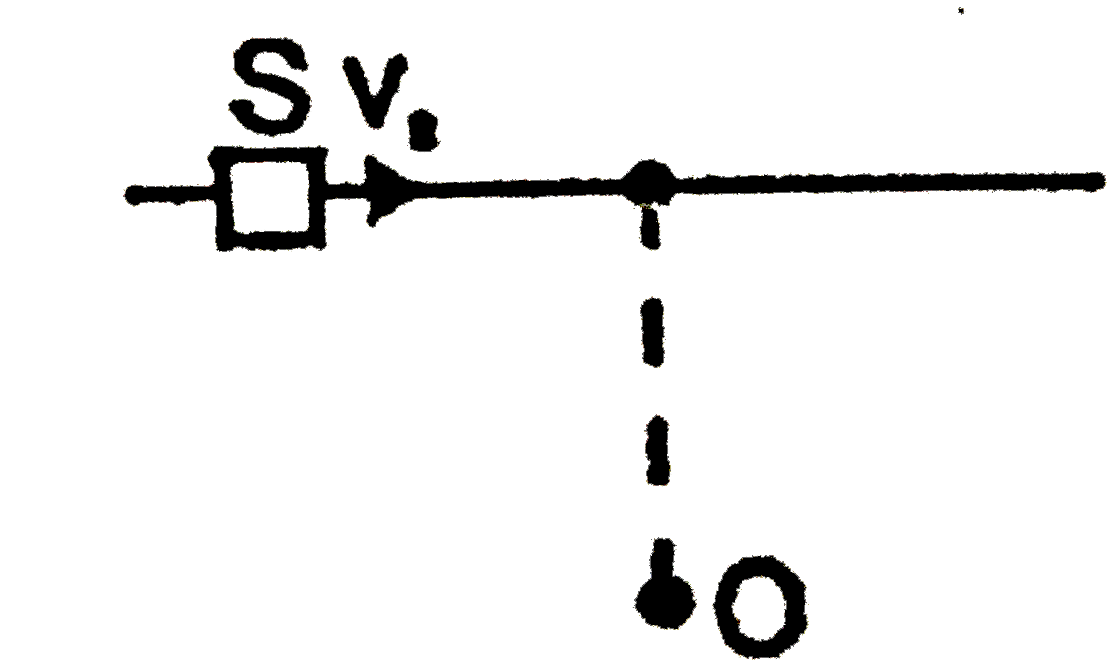A vehicle , with a horn of frequency n is moving with a velocity of 30m/s in a direction prependicular to the straight line joining the observer and the vehicle . The observer perceives the sound to have a grequency (n+n1) . If the sound velocity in air is 330m/s , then
n1=10n
n1=−n
n1=0.1n
n1=0
The correct Answer is:D
No doppler effect, because velocity is perpendicular to line joining vehicle and observer.
Topper's Solved these Questions
- BOOK - CENGAGE PHYSICSCHAPTER - SOUND WAVES AND DOPPLER EFFECTEXERCISE - Multiple Correct44videos
SOUND WAVES AND DOPPLER EFFECT
- BOOK - CENGAGE PHYSICSCHAPTER - SOUND WAVES AND DOPPLER EFFECTEXERCISE - Assertion-Reasoning24videos
SOUND WAVES AND DOPPLER EFFECT
- BOOK - CENGAGE PHYSICSCHAPTER - SOUND WAVES AND DOPPLER EFFECTEXERCISE - Subjective56videos
SOUND WAVES AND DOPPLER EFFECT
- BOOK - CENGAGE PHYSICSCHAPTER - RIGID BODY DYNAMICS 2EXERCISE - Interger2videos
RIGID BODY DYNAMICS 2
- BOOK - CENGAGE PHYSICSCHAPTER - SUPERPOSITION AND STANDING WAVESEXERCISE - Comprehension Type5videos
SUPERPOSITION AND STANDING WAVES
Similar Questions
A vehicle, with a horn of frequency n is moving with a velocity of 30 m/s in a direction perpendicular to the straight line joining the observer and the vehicle. The observer perceives the sound to have a frequency n+n1. Then (if the sound velocity in air is 300 m/s)
View SolutionA source of sound of frequency 500 Hz is moving towards an observer with velocity 30 m/s . The speed of sound is 330 m/s . the frequency heard by the observer will be
View Solution
Knowledge Check
- Question 1 - Select One
A vehicle, with a horn of frequency n is moving with a velocity of 30 m/s in a direction perpendicular to the straight line joining the observer and the vehicle. The observer perceives the sound to have a frequency n+n1. Then (if the sound velocity in air is 300 m/s)
An1=0.1nBn1=0Cn1=10nDn1=−0.1n - Question 2 - Select One
If a source of frequency n moving with velocity v crosses a stationary observer, then the change in the frequency of sound heard by the observer will be (velocity of sound = V)
A2nVvV2+v2B2nVv(V2−v2)C2nVv(V+v)D2nVv(V−v) - Question 3 - Select One
A source of frequency n is moving with a uniform velocity v towards a stationary observer. If the velocity of sound is V, then the change in frequency would be -
AvnV−vBvnVCVnV−vDvnV+v
A source of sound of frequency 500 Hz is moving towards a stationary observer with velocity 30m/s. The speed of sound is 330m/s. The frequency heard by the observer will be :
View SolutionA source of sound of frequency 500 Hz is moving towards a stationary observer with velocity 30m/s. The speed of sound is 330m/s. The frequency heard by the observer will be :
View SolutionA source of sound of frequency n is moving towards a stationary observer with a speed S. If the speed of sound in air is V and the frequency heard by the observer is n1 ,the value of n1/n is
View SolutionA source and an observer move away from each other with a velocity of 10 m/s with respect to ground. If the observer finds the frequency of sound coming from the source as 1950 Hz , then actual frequency of the source is (velocity of sound in air = 340 m/s )
View SolutionThe source (S) of sound is moving constant velocity v0 as shown in diagram. An observer O listens to the sound emmited by the source. The observed frequency of the sound
 View Solution
View Solution

